The wires for the multimeter are an integral part of the device, which fulfills its function when working with electrical appliances. Over time, these parts tend to fail. Accordingly, it is time to acquire new ones. Here it is important not to make a mistake with the choice and connect it to the device correctly.
Purpose and types of wires for a multimeter
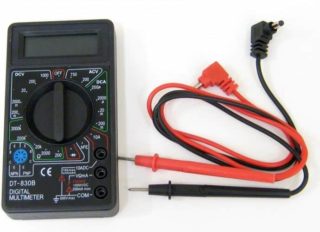
The conductors that lead to the probes play a large role in the correct testing of any electrical appliance. However, if the contact is broken, the device is not able to accurately measure the available voltage and determine the operability of a particular device.
Usually this part comes with a multimeter, but it is better to have a supply of conductors in case of breakage of the main ones. Most of them have PVC insulation, which starts to crack with prolonged use. Often these parts are universal, so they fit most meter models.
Conductors can be rigid (rubber sheathed) or elastic (silicone coated). The latter option is considered the most practical, as it easily lends itself to twisting and any other type of deformation. Such parts are considered reliable and easy to use even during operation in any conditions.
Rigid-insulated conductors are more suitable for carrying out voltage pull-outs in places where there is little space. Rubberized parts are considered safe as they do not allow electricity to pass through. Suitable in the event that a breakdown has formed on the case in the tested electrical device.
Even if the multimeter is equipped with new wires and probes, it is necessary to take into account the safety rules - wear rubber gloves when working.
How to change conductors yourself
Despite the fact that the wires are thin, they can be easily replaced and repaired.
- We disassemble the probes and unsolder the joints, remove the old wire.
- We take a new one and clean its insulation, solder it to the inner end of the probe.
- We cut off a small part of the insulation to the plug and unsolder it, forming a protection for the contact made.
- You can use it - the multimeter is working.
It is better to replace the wires for the multimeter with your own hands in a room with low humidity, otherwise there is a risk of oxidation of the contacts.
Styli types
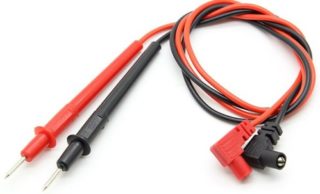
Probes, like conductors, are one of the main parts of a measuring device. With their help, it is possible to accurately determine the contact, analyze the presence of voltage and leakage. They are always included in the kit. There are several types of designs.
Universal
These devices are provided with PVC conductors, which tend to crack in the heat. The tips themselves are made of stainless steel. The kit comes with a set of additional attachments. Experienced electricians believe that these parts are unreliable, as they quickly lose contact with the conductor.
Branded
The probes have wires with improved flexibility. The tips have excellent sealing, the handles are rubberized, so it is convenient to work with them. On such parts, special caps are provided, which create protection against dust and moisture.
For SMD mounting
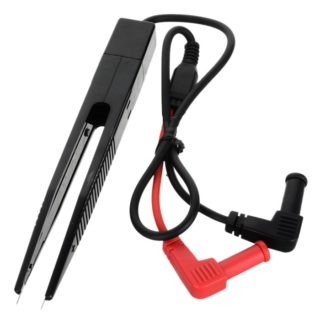
It is convenient to connect devices.They are used for periodic measurements during SMD installation. The tips are in the shape of a needle, equipped with protective caps. With the help of probes, it is possible to pierce the insulation of the cable, as well as to clean the solder mask on boards and other surfaces.
"Crocodiles"
They are also considered convenient for electrical work. They are much more effective than sharp electrodes, they are able to prevent short circuits during operation. These styli usually vary in size. The details are necessarily in a dielectric sheath.
How to make homemade probes
Many amateur electricians prefer to make their own test leads. This will require a small list of available tools and tools, as well as an understanding of how to connect a multimeter to measure voltage to active parts.
Standard styli
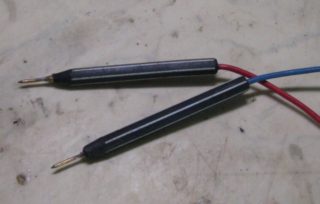
The simplest tips are made from parts that are on the farm.
- We take two fountain pens and two darts.
- Unscrew the pens and take out the rods.
- Instead, we put dart tips into the body.
- Next, you need to warm up the handle and insert the solder inside.
- Next, the wire is threaded through the entire handle.
- If you notice that the tip is loose, you can glue it with a glue gun or heated plastic.
It remains only to cool the homemade product and you can connect to a working multimeter.
Better to use two identical pens. This will make both hands comfortable while handling the probes.
Insulation puncture probes
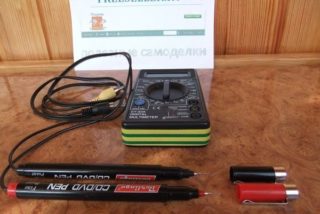
If you need to make the probes ultra-thin, you will need ordinary sewing needles and pencils (with replacement of the lead). However, these products are considered very dangerous and require care during use.
- We take out the remaining rods from the body of the pencil.
- The wires must be connected to the needles that contact the sockets of the multimeter.
- We insert the needles into the center of the pencil and sit on the glue.
- We solder the finished plugs to the wires so that there are no kinks.
- Next, you need to put heat shrink tubes on the outlet holes of the pencils, threading a wire through them.
- For safety, we put silicone caps on the ends of the needles.
Also, probes for a multimeter can be made with a stock of various attachments, for example, terminals and clamps. However, this will require special adapters.
Probe cap options
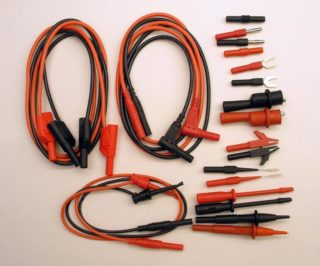
Separate caps for the multimeter contact tips are available from your radio store. Often these parts are lost, and storage of the tool without them is unacceptable, since there is a high risk of breakage. You can use options from the available tools.
- We take a regular cap from a gel pen, pour hot glue inside.
- Be sure to grease the tip of the dipstick with oil or petroleum jelly.
- We insert the probe inside the product and wait until the glue base hardens.
- Carefully remove the tip and wipe off the grease.
Next, we make the second cap in the same way.
Connect a multimeter to measure voltage only when the instrument is fully functional. Otherwise, the tester is considered unsafe to operate.








